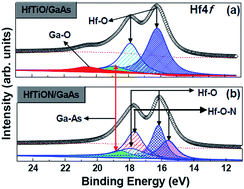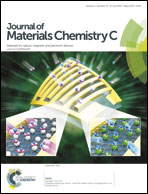Interface control and modification of band alignment and electrical properties of HfTiO/GaAs gate stacks by nitrogen incorporation
Abstract
Effects of nitrogen incorporation on the interface chemical bonding states, optical dielectric function, band alignment, and electrical properties of sputtering-derived HfTiO high-k gate dielectrics on GaAs substrates have been studied by angle resolved X-ray photoemission spectroscopy (ARXPS), spectroscopy ellipsometry (SE), and electrical measurements. XPS analysis has confirmed that the interfacial layer of a HfTiO/GaAs gate stack is suppressed effectively after nitrogen incorporation. Analysis by SE has confirmed that reduction in band gap and increase in refractive index are observed with the incorporation of nitrogen. Reduction in valence band offset and increase in conduction band offset have been observed for a HfTiON/GaAs gate stack. Electrical measurements based on metal-oxide-semiconductor (MOS) capacitors have shown that the MOS capacitor with a HfTiON/GaAs stacked gate dielectric annealed at 600 °C exhibits low interface-state density (2.8 × 1012 cm−2 eV−1), small gate leakage current (2.67 × 10−5 A cm−2 at Vg = Vfb + V), and large dielectric constant (25.8). The involved mechanisms may originate from the decrease in the interface state density and the increase in the conduction band offset. The appropriate band offset relative to GaAs and excellent interface properties render HfTiON/GaAs as promising gate stacks in future III–V-based devices.


 Please wait while we load your content...
Please wait while we load your content...